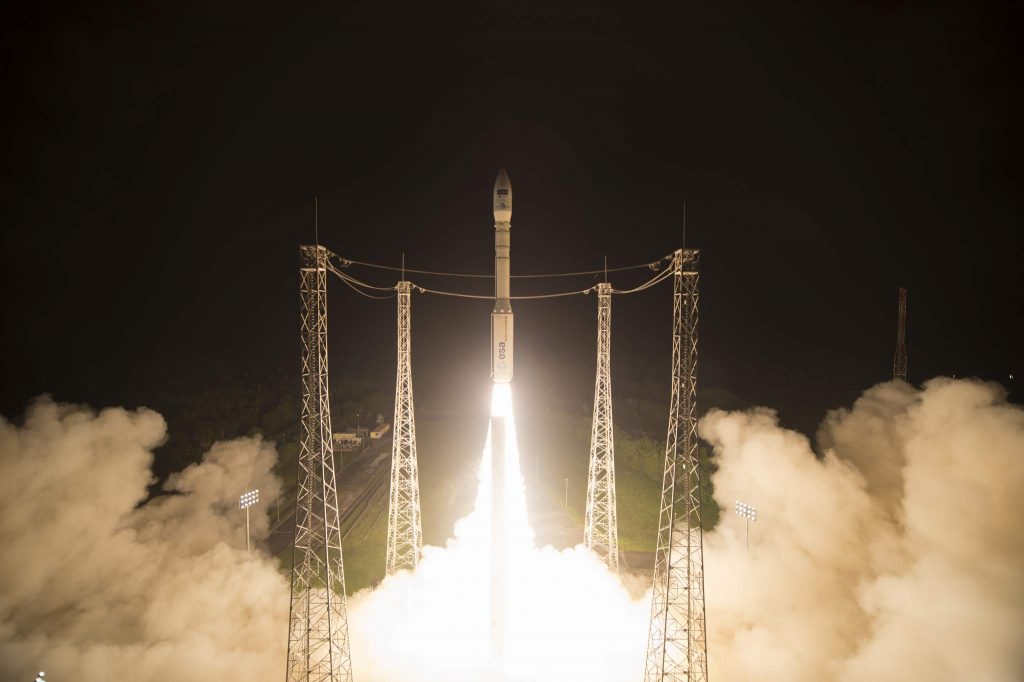The application of 3D printing to the space industry will receive a boost with the opening of a new ‘one stop shop’ based at the UK’s Manufacturing Technology Center (MTC) in Coventry.
The Additive Manufacturing Benchmarking Center (AMBC) will be established by the European Space Agency (ESA) and managed by the MTC. When 3D Printing Industry visited the MTC earlier this year for the UK Intelligent Engineering forum we saw first hand some of the advanced work conducted.
The objective with the AMBC is to draw on the world-leading resources and pool of knowledge available at the MTC to assess the use of 3D printing for ESA high-tech projects. Using the state-of-the-art 3D printing capabilities at the MTC, prototypes for a range of ESA projects will be produced, assessed and the subsequent results disseminated to a wider audience.
Torben Henriksen, Head of ESA’s Mechanical Department, said, “The ESA’s Directorate of Technology, Engineering and Quality has called for the creation of a detailed roadmap for the harnessing of 3D printing to the space sector. We’ve been guided to set up this centre, with customers and industrial partners questioning us about the best way to try out 3D printing for the first time and test out the maturity of the results.”
The project is also intended to further extend what ESA describes as, “European leadership in 3D printing.”

State-of-the-art 3D printing facility
Tommaso Ghidini, head of ESA’s Materials and Processes Section, explains that “We don’t want to compete with industry; instead, the idea is that ESA projects and interested companies can investigate this new engineering world to the point where they will take a decision to proceed further.”
Welcoming the announcement, Dr Dave Brackett, technology manager for additive manufacturing at the MTC said, “This is a brilliant opportunity to further the technology in one of the most testing and dynamic application areas. As the UK National Centre for Additive Manufacturing, we are in a unique position to work with ESA as their Additive Manufacturing Benchmarking Centre and provide the space sector with access to state-of-the-art capability and understanding to support industrial exploitation.”
One the of first space projects to benefit will be the Vega small launcher. Giorgio Tumino, Vega’s development programme for ESA, said, “By evolving Vega over time, we aim to hone its competitiveness, increase its flexibility and reduce recurring costs.” Tumino added,
We’re cooperating with AMBC to investigate the use of 3D printing for rocket engine thrust chambers for Vega’s upper stage, potentially allowing for a significant simplification in production and reduced costs. For such high–pressure/high-efficiency liquid rocket thrust chambers, a good surface finish is essential, with the absence of critical defects and the equivalent strength properties of its parent material – produced to a size at the limit of the current capabilities for powder-based additive manufacturing machines, using non-standard alloys.
AMBC will demonstrate the capability to use 3D printing on copper-based thrust chambers and set the proper process parameters, producing a one-third scale thrust chamber that can then be used for firing tests. If all goes well, then the next step would be to scale it up to full scale, and start the formal qualification of the process for flight use.
Metal, ceramic and polymer 3D printing
The MTC has an additive manufacturing portfolio that includes metal, polymer and ceramic 3D printers. This equipment will be used to conduct testing and offer detailed reports on the strengths and weaknesses of the selected 3D printing method.
The MTC already has strong links, both geographically and professionally, with the ESA–Rutherford Appleton Laboratory Advanced Manufacturing Laboratory at ESA’s Harwell facility. The ESA–Rutherford Appleton Lab has a focus on advancing scientific knowledge of 3D printing and is less than 100 miles from the MTC site.
3D Printing Industry attended a presentation by MTC Chief Technologist David Wimpenny earlier this year, where the objectives and the integrated approach of the center were explained in more detail.
You can also read more about how NASA are experimenting with 3D printed radiation shields in this article.
For all the latest 3D printing industry news from across the world subscribe to the most widely read 3D printing newsletter and follow our active social media accounts.
The MTC in Coventry, UK. Photo by Beau Jackson


